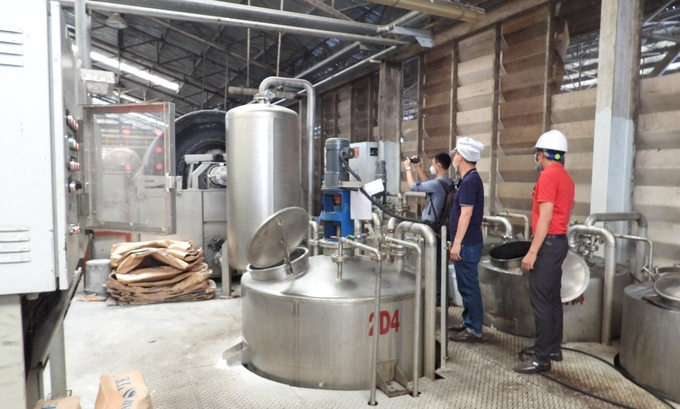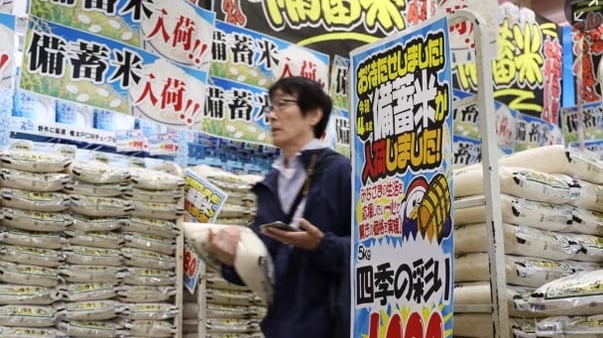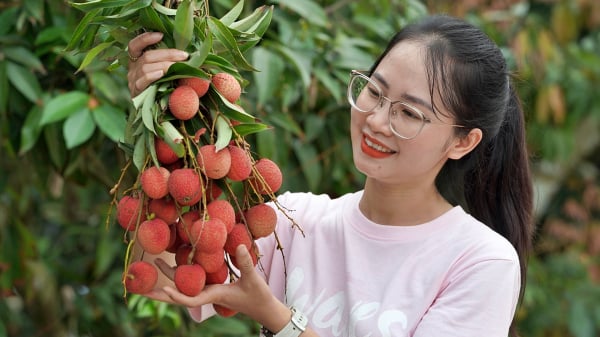June 18, 2025 | 03:20 GMT +7
June 18, 2025 | 03:20 GMT +7
Hotline: 0913.378.918
June 18, 2025 | 03:20 GMT +7
Hotline: 0913.378.918

Lack of input materials is a difficult problem for the cassava starch processing industry. Photo: Tran Trung.
According to the Vietnam Cassava Association, the country's cassava growing area is currently about 530,000 hectares, with a total output of over 10 million tons/year. The export turnover of cassava products increased from more than US$ 0.9 billion (in 2018) to nearly US$ 1.5 billion (in 2022). However, the raw material area currently only meets the needs of 30-40% of the factory's capacity. To achieve the set goal, first of all, it is necessary to solve the problem of imbalance between processing and raw materials. To do that requires the participation of management agencies, local authorities, and the cooperation between businesses and farmers.
Typically in Tay Ninh, the locality ranks second in area and tops in the number of cassava processing factories in the country. Due to the rapid development of processing factories, there has been considerable pressure on raw material areas.
According to a cassava processing enterprise in Tay Ninh, the demand for cassava starch in the world is increasing due to this product's wide range of uses. Today, cassava starch is not simply food but is also widely used in food, pharmaceuticals, cosmetics, and light industries such as confectionery and synthetic fibers, pellets, modified flour, spices... In particular, modified tapioca starch and malt are also the main raw materials for producing environmentally friendly biofuels, contributing to meeting consumer demand for fuel worldwide.

Many cassava starch factories operate slowly due to lack of raw materials. Photo: Tran Trung.
"With the main role of controlling inputs, we have recently focused on guiding farmers to farm sustainably and move towards organic production. The price of cassava starch from organic sources is several times higher, which will help increase the value per hectare of land while increasing export value and optimizing profits for farmers. In addition, we coordinate with scientists and international organizations to find good varieties to increase productivity and quality, improve the value of cassava in the field, and serve well as raw materials for factories", Mr. Xuan shared.
Regarding fundamental solutions, Mr. Nguyen Dinh Xuan said that Tay Ninh cassava industry is still limited as there is no link in investment in purchasing raw materials between processing factories and farmers, and no policy mechanism has been formed to attract long-term investment. For Tay Ninh's cassava to grow stably and truly sustainably, it is necessary to reorganize production towards building large production areas. This is the basis for linking with businesses to reduce intermediaries and create opportunities to upgrade the product value chain.
According to data from the General Department of Customs, in the first 10 months of 2023, cassava and cassava products exports reached over 2.39 million tons, worth US$ 1.02 billion, of which China is still the primary export market.

Cassava processing enterprises proactively innovate technology and improve quality to access and expand markets. Photo: Tran Trung.
In the first 10 months of 2023, although cassava exports decreased, cassava and cassava products to some markets still grew well in volume and value compared to the same period in 2022 such as Taiwan, Malaysia, Japan, EU...
According to Mr. Nghiem Minh Tien, Chairman of the Vietnam Cassava Association, for the cassava industry to develop stably, sustainably and with quality, Vietnam needs to restructure the domestic cassava industry and ensure the balance of raw materials in production. At the same time, build a linked cassava variety development center to create new seed sources to meet the seed needs of farmers promptly; ensure fairness of credit and tax policies; diversify export markets; Encourage and empower businesses to invest in environmental treatment and in-depth production and processing to enhance the value of starch.
For term III (2023 - 2028), the Vietnam Cassava Association targets the Chinese market as an immediate and long-term market, not replacing but not absoluteizing this market. "The Association views Northeast Asian countries and the EU as promising and potential markets while promoting the domestic market," Mr. Nghiem Minh Tien shared.
According to Mr. Nguyen Dinh Xuan: "In the coming time, in order for the cassava industry to grow further, factories need to be closely linked with farmers through ordering, investing, purchasing from farmers and having commitments to set standards. Standards like cassava farmers must follow VietGAP and organic standards... When farmers cultivate cassava professionally and meet standards, the selling price will be higher; The factory also ensures the legality of starch standards when exported to countries around the world."
Translated by Tuan Huy
/2025/06/17/2344-1-131758_261.jpg)
(VAN) Amid tariff risks and growing trade barriers in the U.S. market, Australia is emerging as a promising destination to sustain the growth momentum of Vietnam's shrimp exports.
/2025/06/17/2013-1-nongnghiep-112009.jpg)
(VAN) This notable growth trend reflects the global taste for fresh, nutritious fruits and the expanding use of lychees across various sectors.

(VAN) The political and cultural insulation of Japan’s beloved grain is falling apart, and experts warn the country’s relationship with the staple will have to adapt.

(VAN) Noting risks, report examines impacts of avian influenza, changing trade patterns since 2022, fish fraud, and shipping industry’s net-zero goals.

(VAN) Mr. Tran Quang Bao, General Director of the Forestry and Forest Protection Department, met and worked with the International Wood Products Association to promote cooperation in the field of timber trade.

(VAN) China's outbound shipments of rare earths in May jumped 23% on the month to their highest in a year, though Beijing's export curbs on some of the critical minerals halted some overseas sales.

(VAN) To sustain capital flow, administrative reform alone is not enough; what farmers truly need is an ecosystem where both government and businesses grow together in support.